Updated 2/12/23
Snowboard Terms
Do you think you have all of your snowboarding terms on lock down? Or are you looking to pick up your first set up and want to be sure you’re ahead of the game when you take your first lesson? Maybe you want to impress a car full of teenagers as you’re giving them a lift to the hill. Regardless, it’s not a bad idea to familiarize yourself with the most common words associated with snowboarding and snowboarding equipment. Even for the veterans, you may pick up a few new terms, so check them out…
3, 5, 7, 9 – Short for spin rotations: 360, 540, 720 and 900 etc. etc.
50/50 – When the board rides straight a rail or box.
A
Air – Basic jump into the air from the snow.
Air-to-Fakie – A half pipe trick where you ride straight up the wall of the pipe, jump without rotating, and land back in the pipe riding backwards towards the other wall.
All-Mountain – Gear designed to ride any type of terrain from park to groomers to powder.
Alley-Oop – Jumping and spinning in a halfpipe but initiating the rotation towards to top of the pipe.
B
Backcountry – Terrain outside of resort boundaries with no marked trails and natural obstacles like trees and cliffs.
Backside – It is used to describe your direction of rotation in which the rider spins with their back first. When referring to rail riding is means to approach a rail as if your back would be facing the rail if you just rode past it.
Backside 180 – When a rider makes a 180 degree rotation off the jump spinning with their back towards the landing first.
Backside Air – Any aerial maneuver performed on the heelside wall of the half pipe
Boned Out – To straighten one leg while grabbing to add a little more style and show control when jumping.
Baseplate – The bottom, try like part of the binding that the boot stands on and is what fixes to the board.
Base – The underside of the snowboard designed to glide across the snow.
Banked Slalom – A downhill slalom race course in which gate turns are set on snow banks. The Mount Baker Legendary Banked Slalom held every February is the most famous banked slalom course in the world.
Bevel– The angle of a snowboard’s steel edges. Mostly seen on beginner boards to make the board more catch free and easier to learn on.
Boardercross – A competition where participants race through turns, banks, obstacles and jumps in heats of 4-6 riders.
Boardslide – Sliding a box or rail with your board at 90 degrees, perpendicular to the feature; can be done both front or backside.
Bonk – To intentionally tap (or bonk) a non-snow object, like a tree stump, with the snowboard.
Butter – Riding on just the nose or tail of the board on flat snow in any manner, most of the time spinning while doing this.
Buttery – A term used to describe something that is done smoothly
C
Camber – The specific bend of the board from tip to tail. Camber gives a board spring and pop on groomed runs. Reverse camber or rocker is the opposite of camber where the weight rests on the center of the board, rather than the tip and tail when laying flat.
Cant – In some bindings this is a slight angle at which the footbed of the binding tilts inward to help reduce fatigue on the knees while riding.
Carve – A perfect turn where the edge of the board actually digs into the snow.
Centered Stance – A stance that is centered on the board when your bindings are mounted. The distance between the nose and the front binding is the same as that between the tail and the rear binding. A centered stance is usually preferred by riders who ride regular and switch.
Chatter – Vibration of the snowboard resulting from high speed, tight turns, and/or icy conditions. Chatter is undesirable and common with soft boards at high speeds.
Chute – A narrow strip of snow bordered by rocks, cliffs and tight trees.
Corduroy – The tracks left by a snowcat grooming a trail that looks like corduroy pants. Clean, fun turns are made on corduroy terrain.
Core – The main material in a snowboard, usually made of wood that is the basis of what type of board you have.
Cork – An off-axis spin where the rider’s head dips below the relative position of the board.
Cruiser Run – A mellow, smooth trail at a resort where the riders take it easy.
D
Dampening – Reducing chatter (vibration) to increase handling and control. Structural modifications can be made to a snowboard or bindings to increase dampening.
Delaminate – When the top sheet of your snowboard begins to chip or peel off typically resulting from a crash, long term use, a defect or poor care of the snowboard.
Detune – The process of dulling the edges of the snowboard. Most people detune the edges around the nose and tail so they do not catch in the snow.
Ding – A scratch or gouge in the base of the board. Dings can occur if a rider rides over a rock or hits a hard chunk of ice.
Directional Stance – When your bindings are mounted on the snowboard so the distance between the nose and the front binding is greater than between the tail and the rear binding. With your bindings set this way, you would ride more easily in your preferred direction.
Duckfooted – A stance angle in which the toes are pointed outward like a duck.
E
Edge – The smooth metal edges that run the perimeter of the snowboard.
Effective Edge – The length of steel edge on the snowboard that comes in contact with the snow when making turns. A longer effective edge makes for better edge hold, while shorter effective edge makes boards easier to transfer from edge to edge.
Extruded Base – P-tex base of a snowboard created by extrusion of sheets. It is of lower quality, does not hold and absorb wax very well, and is less durable.
F
Faceplant – When a rider falls on his or her face.
Fakie – Landing backwards or with your non-dominant foot forward. Not to be confused with “riding switch.”
Flat Bottom – The flat area in a halfpipe between the two opposing transitional walls.
Flatland – Term used to describe tricks performed on a flat slope without obstacles.
Flex – Term used to describe the snowboard’s stiffness and pattern of how it flexes. It refers to longitudinal flex (flex of the length) and torsional flex (twisting).
Forward Lean – The adjustable angle of degree to which the binding highbacks keep your ankles bent in a forward leaning position.
Freeriding – Snowboarding more focused on going fast and carving (groomers, powder, backcountry) for fun.
Freestyle – Mostly associated a riding style including jumps, spins, tricks.
Frontside Air – An 180 spin (usually with a grab) performed on the toeside wall of a halfpipe.
Frontside –It is used to describe your direction of rotation in which the rider spins with the front or chest first. When referring to rail riding is means to approach a rail as if your chest would be facing the rail if you just rode past it.
G
Goofy Foot – Riding with your right foot forward.
Grabs – Grabbing your board while jumping to emphasize style or control in a trick.
Grom – Referring to a young snowboarder.
H
Halfpipe – A U-shaped snow structure built for freestyle snowboarding with opposing walls of the same height and pitch.
Handplant – A trick where one or both hands are planted on the lip of the half pipe wall or obstacle and the rotation is either backside or frontside
Hard Boots – Similar to alpine skiing boots, hard boots are very stiff for maximum support in carving and racing.
Heel Drag (overhang) – When the bindings are placed too far toward the heel side, the heels drag in the snow while riding and interfere with turns. Heel drag can occur when the board is too small for a rider’s foot.
Heelside Turn – Turn made with the heel side edge.
Highback – The tall part of the binding that extends up the back of the boot to help initiate better heelside carves.
Hip – A jump where the landing is at a different angle than the take-off; typically 90 degrees to the left or right.
Hole Pattern – The pattern of snowboard inserts (or channel) that is used to mount the bindings to the board.
Huck – To throw yourself aggressively into a trick weather IN or OUT of control.
I
Indy Grab – Grabbing the toe edge between the bindings with the back hand.
Insert – Metal threads laminated within a snowboard in order to secure the screws that attach the bindings.
Invert – A trick where the head is beneath the level of the board at some point usually without spinning. (backflip)
J
Jam Session – A competition in which all riders perform at the same time. One rider drops in after the next in no particular order.
Jerry – Someone who doesn’t know anything about skiing or snowboarding.
Jib –Riding on something other than snow like rails, boxes, trees, garbage cans, logs, etc.
K
Kicker – Large jump with a manmade or natural ramp.
Kook – Someone who is unedgucated to the style and culture of snowsports
L
Late – Putting an extra move at the very end of a trick before landing.
Leash – The dumbest invention in snowboarding and pretty much not even a thing anymore
Lip – The top edge of the half pipe wall.
Lipslide – Popping onto a rail or box with the tail of your board hopping over the feature and landing in a front or back boardslide.
M
Method – The most stylish grab in snowboarding (when done right). The rider grabs the heelside edge of the board with their front hand as close to the bindings and attempts to rotate the base in front 90 degrees to the snow.
N
Nollie – Much like an ollie, except the rider springs off of the nose instead of the tail.
Nose – The front end of the snowboard or tip.
Nose Press – Typically done on rails or boxes, leaning forwards on the nose to lift the tail off the feature for the entirety of the grind.
Nose Slide – To press the nose of the snowboard while lifting the tail and sliding along the ground or an object.
O
Ollie – Ollie is to get air by first lifting the front foot, springing off the back foot, then landing on both feet.
Overhang – The amount you boots hang off the toe and heel edge of your board. Not a bad thing but definitely something you want to be centered and adjusted properly when first setting up your board.
P
Pipe Dragon – A grooming device used to groom/cut half pipes.
Poach – To ride closed terrain, like a roped off trail, the park or half pipe.
Poser – One who pretends to be something one is not.
Pow – Short for powder; fluffy, freshly fallen snow.
Pretzel – Spinning off of a box or rail in the opposite direction you spun onto it.
P-Tex – The polyurethane used to form the base of skis and snowboards. Although not all snowboards bases are composed of P-Tex, many riders often refer to any base material as P-Tex.
Q
Quadratic Sidecut – Sidecut design shape which is based on a quadratic formula rather than the arc of a circle. Such a design allows for camber and board flex to be integrated into the board construction.
Quarterpipe – A feature similar to a halfpipe but with with only one wall.
R
Rail – A snowboard obstacle made of metal can be in a variety of shapes most of the time resembling a hand rail for stairs in the street.
Railing – A term used to describe making fast and hard turns.
Regular Footed – Riding on a snowboard with the left foot forward.
Rewind – Where a rotation is initiated, stopped, and its momentum reversed.
Rocker – A camber shape where the tips of the boards are lifted off the snow instead of the middle of the board.
Rolling Down the Windows – When a rider is caught off balance in the air and they flail their arms wildly in the air to try and recover.
Run – A slope or trail.
Running Length – The length of the base of the snowboard which touches the snow.
S
Sandwich Construction – Snowboard construction which a wood core is used and typically provides the lightest weight and most lively flex.
Sameway – Spinning OFF of a box or rail in the same way you spun ON to the feature.
Sidecut – The measure (usually in cm) of the circle radius to which the sidecut of a snowboard corresponds. The smaller the number, the quicker a board will turn.
Side Hit – A natural jump on the side of the groomed run.
Sideslip – Sliding sideways down a slope. Beginners often sideslip when they are learning.
Sintered Base – High molecular-weight base formed by the heating and compression of small fragments of P-tex. Sintered bases absorb and hold wax better and are more durable than extruded bases, i.e. they are faster.
Slopestyle – A freestyle event in which the competitor rides over a series of various kinds of jumps, boxes and rails. He or she is then judged on the performance of tricks and maneuvers.
Snurfer – The original snowboard made in 1965 by Sherman Poppen. It did not have bindings or edges, but had a rope attached to the nose for steering.
Snake – A term used to describe someone who cuts in front of you in the lift line or drops in front of you in the half pipe or park.
Speed Check – To slow down by make a few stopping motions (without actually stopping) when approaching a jump with too much speed.
Spin – To rotate in the air off of a jump.
Spine – A snow sculpted jump with two transitional walls coming together to form a spine. A rider may air off either side and land on the other.
Spoon Nose – A nose of a snowboard that is shaped so the edges curve up like a spoon. A spoon nose is helpful for buttering and jibbing, so as not to catch an edge at the nose.
Stalled – When a trick is performed and held still or ‘stalled’ for an extended period of time in the air..
Stance – The position of ones feet and bindings on the snowboard differentiated by angles and width.
Steeze/Steezy – Style mixed with Ease
Stick – Another name for a snowboard or a term used to describe a perfect landing by a rider.
Stoked (slang) – An alternate term for the word psyched or excited.
Stomp – A term used to describe a good landing made by a rider.
Stomp Pad – The no slip pad attached to the snowboard with adhesive between the bindings. It helps in getting on and off the lift with the rear foot out of the binding on the stomp pad.
Straight Air – Going off of a jump without spinning or flipping.
Switchstance (Switch) – Riding with your non-dominant foot forward. (not to be confused with “landing fakie”)
T
Table Top – A jump in which the take off and landing is connected by a long flat surface. Ideally, the rider should clear the ‘table’ and land on the down slope.
Tail – The rear tip of the snowboard.
Tail Press – Typically done on rails or boxes, leaning backwards so that the nose of ones board comes off of the ground, and one is balancing on the back of the board. More commonly known as a “five-o”.
Tail Slide – To slide along the ground or an object solely on the tail of the snowboard with the nose lifted.
Toe Edge – The edge of the snowboard closest to the toes. Opposite of heel edge.
Toeside Turn – Making a turn on your toe side edge.
Transition (Tranny) – The radial curved section of a halfpipe wall between the flat bottom and the vertical.
Traverse – To ride perpendicular or diagonal to the fall line.
Tree Well – A hole in the snow surrounding a tree. Often times, tree wells are very difficult to see and very dangerous.
Tuck – A crouched position of low wind resistance used to attain higher speed.
Tweaked – Pulling the board forward or backward while preforming a trick in the air.
Twin Tip – A snowboard which has both nose and tail shaped identically. The flex is also mirrored throughout the board and it’s mean’t to have the same feel whether riding switch or regular.
V
Vertical (Vert) – The vertical top portion of a wall in a half pipe that is fully 90 dergees to the slope allowing the rider to enter and exit the pipe.
W
Wack – Something that is not good.
Wall – the transition and vertical section of a half pipe.
Waist – The narrowest part of the board in between the bindings.
Y
Yard Sale When a rider or skier falls so forcefully and so ungracefully that all of their gear is spread around them on the slope.
If there are any snowboarding terms that we’ve missed, please let us know via the comment form below. Thank you.
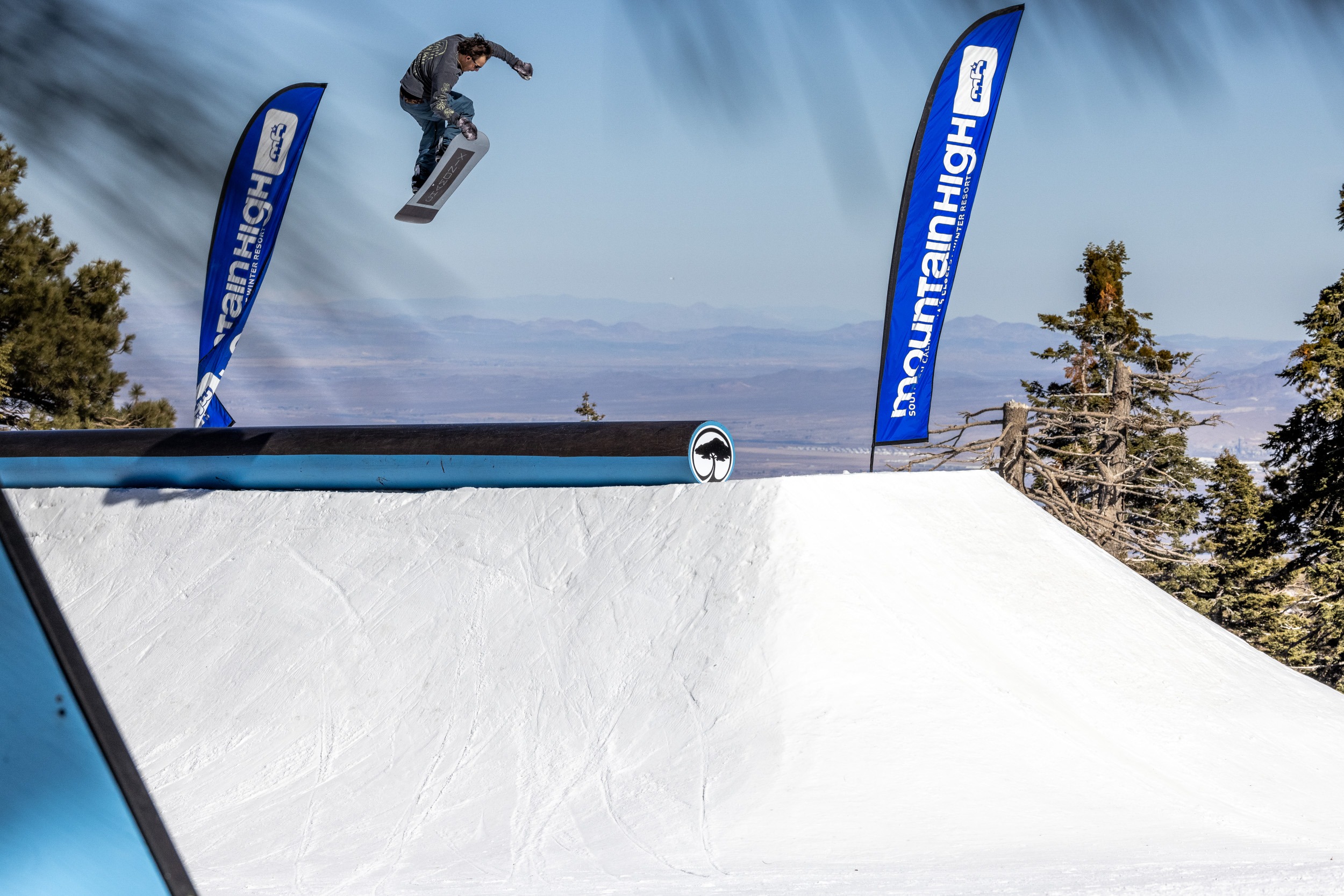


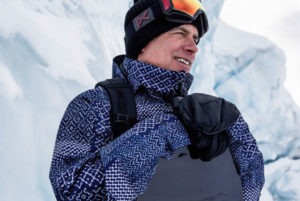

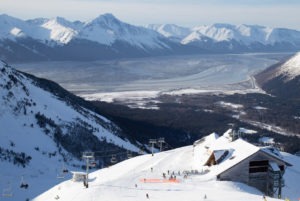
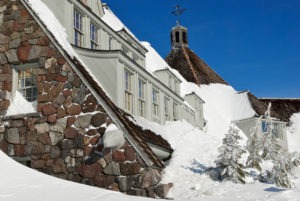
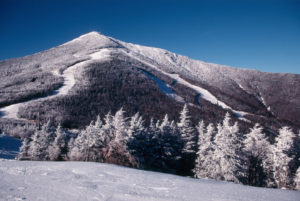
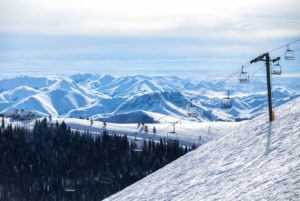
Pretty sure that is the only sport with such a strange language.
I fully agree
i do agreed thou
[…] Alfio was my witness. Boy, am I inordinately proud of myself. Oh, and I hit the terrain park (the grom’s terrain park) for the first time today. Don’t laugh. I wasn’t the only one there who […]
You left out “yard sale”
Yard Sale – is a fall where someone’s equipment falls off. This equipment includes hat, goggles, gloves, skis, poles, or anything else. The equipment is scattered up the hill and whoever fell has to walk back up to gather it.
Yard Sale is a term or skiers. Out boards don’t come off. Duh!
Yard Sale is a skier term. Our boards don’t come off, duh!
Unless the crash is really hard.
Strech legs
Scorpion – when a rider slides or stops on face while legs bend over head forwards.
What is “Pow”?
Fresh new snow!
Pow is powder.
you need to get a search bar
Tripod?
Pow?
I would also add “gnarly”
Steezy
What is as 900 truck driver?
It’s a spin and grab combination. The spin is 2.5 rotations that can be done frontside, backside, switch backside, or switch frontside (cab), with an Indy and Melon grab done at the same time.
[…] Although the review was great for its target audience, like all snowboarding media there was some snowboarding lingo that my be hard to understand if you are new to the sport. They definitely put this board through […]
Boiiii
Trips? Scorpion? Radi-dad (snowboarding dad)? Heel Hunch? Pitted? Shredded by the gnar (when one attempts an gnarly trick, but instead of shredding the gnar, the gnar shreds them, and they fall horribly and everybody laughs)?
[…] You check out one e-commerce site, and there’s a lot of talk about how well a board can butter, whether or not it has a stomp pad and if it’s a twin tip. […]
[…] got the right sports gear on, like wearing goggles not made in 1978, in addition to understanding the snowboarding lingo (you don’t want to look like a total Jerry out […]
Term not in list ! Shred the gnar Shredding most excellent powder (pow)
Groms – young riders under 12 years of age
I just became a fan of snowboarding @79 after watching the X Game guess you can call me Senior Jerry!
I cant say for sure that I am the one that coined the phrase “Yard Sale”…But I started using this term after a horrible wipe out on the ironically named run wipe out at mammoth mountain in 1985…I had never heard the term before…but standing there wondering how the hell my jacket came off, and gear everywhere, it seemed appropriate…but who knows